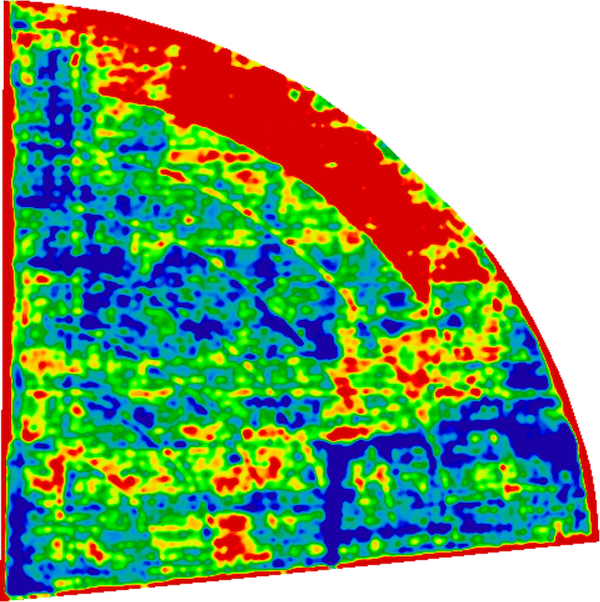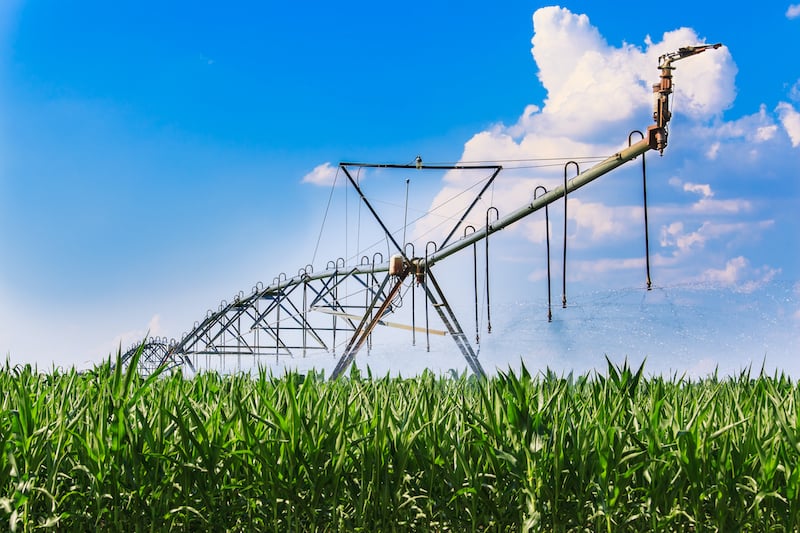In Kansas, water management concerns vary by region. While surface water is prevalent in the eastern half of the state, the western half draws heavily on groundwater from the Ogallala Aquifer, which supplies farmers across the Great Plains.
In 2013—in part in response to concerns about the depletion of the Ogallala Aquifer and sedimentation of watersheds—the State of Kansas began a resource planning process to address water use in the state over the next 50 years.
“Water and the Kansas economy are directly linked,” then-governor Sam Brownback said at the time. “Water is a finite resource and without further planning and action we will no longer be able to meet our state’s current needs, let alone growth.”
Among the ideas to come out of the Kansas Water Vision was the establishment of the Water Technology Farm program. These demonstration farms exist to better understand groundwater usage and help growers discover tools and technology that can help them conserve resources while protecting yields and farm profits.
The power of partnerships
The Water Technology Farm program is a public-private partnership, meaning that government agencies, researchers, industry groups, and private companies work together to serve farmers and other stakeholders. The Kansas Water Office acts as the lead agency, and the state provides the bulk of the funding—but the program benefits from in-kind and cash contributions from about 100 other participating partners, too.
“It's not one entity or organization that's looking to move this forward singularly,” explains Matt Unruh, Chief of Policy and Communications for the Kansas Water Office. “It's people that have identified this as a common priority and something that they're willing to get behind.”

Ceres Imaging, which donates technology and remote sensing expertise to the program, is a natural fit for the program. “We love opportunities to engage in educational programs like the Water Technology Farms and demonstrate how aerial data can help tell the story of the agronomic needs of a field,” says Sarah Bratschun, a Ceres Imaging remote sensing scientist. “When we understand the patterns of stress and vigor across the field, we can dial back inputs like water, fertilizer, and chemicals to better match the needs of the field and protect the quality of our watersheds.”
Farmer-friendly water tech
Unruh says this breadth of support provides avenues for growers to evaluate farm technology that might help them conserve water—while getting help mitigating risk and covering costs. Researchers at Kansas State University are using data collected at the demonstration farms to help improve the recommendations they give to farmers on how to irrigate effectively.
Vaishali Sharda, Assistant Professor in the Department of Biological and Agricultural Engineering, is among the researchers analyzing data from technology in use on the demonstration farms. Her team’s projects include estimating crop coefficients for corn and building crop models to better predict irrigation needs.
“Producers want to be sustainable, and use the best management practices, but they don’t want to compromise yields,” she says. For that reason, the program aims to find water conservation methods that are practical to implement and friendly to farmers’ bottom line.

Pat Janssen, acting secretary of the Water Protection Association of Central Kansas (WaterPACK), manages one of the Water Technology Farm sites in partnership with Innovative Livestock Solutions (ILS). He puts it this way:
“The overall goal of the program is to demonstrate that producers can save water by using existing equipment—not making any significant capital expenditures, but by getting their pressures correct, getting [equipment] operating in the parameters that it was designed to operate in, and then utilizing moisture probes, aerial imagery, or other technologies to schedule and refine irrigation scheduling.”
This pragmatic approach is producing results. At the Long Water Technology Farm site north of Wichita, farm manager Matt Long agreed to take a 29% reduction in the historical use of water for the first seven years of the program—but has already achieved 40% less water than the historical use by adopting high-efficiency irrigation nozzles and various moisture monitoring technologies.
“Part of the reason water conservation is important to me is because of the community I live in, my local seed business, and to conserve water for the next generation of farmers and ranchers,” Long says.
